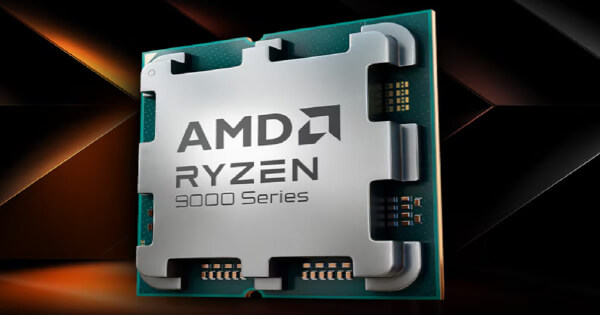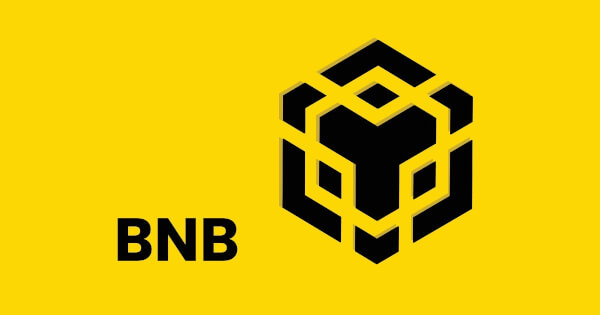Uncategorized
BounceBit Mainnet Goes Live with Exciting New Features | IDOs News

BounceBit Mainnet Launches
We are thrilled to announce the official launch of the BounceBit Mainnet, marking a significant milestone since our initial rollout in late January 2024. Through the successful Water Margin TVL Event, BounceBit has seen tremendous growth, boasting approximately $1 billion in Total Value Locked (TVL) and nearly 400,000 early contributors.
Impressive Growth Since Initial Rollout
Since the launch of BounceBit’s Premium Yield Generation feature, thousands of staked BTC are continuously generating yield through Funding Rate Arbitrage. Our Testnet phase was also a resounding success, showcasing the BounceClub ecosystem and highlighting the robustness and stability of the BounceBit Network.
New Functionalities Introduced in BounceBit Mainnet
The BounceBit Mainnet launch introduces a host of new functionalities accessible via our portal at portal.bouncebit.io. For detailed guides and information, our documentation has been freshly updated at docs.bouncebit.io.
BB Tokens Required for Transactions
As a friendly reminder, the BounceBit chain operates as a standalone Layer 1 network where BB serves as the gas fee token. Ensure you have BB tokens for transactions on the BounceBit chain. Check if you’re eligible for BB airdrop or purchase BB on Binance.
What to Expect on BounceBit Mainnet
Now let’s guide you through what you can expect on BounceBit Mainnet.
1. Node Staking & Delegation
BounceBit introduces a dual-token PoS mechanism where validators stake both BBTC and BB to enhance network security and robustness. Participants can delegate their assets to node operators through our native LSD module, which issues a voucher upon delegation. If you delegate BB, you will receive stBB; If you delegate BBTC, you will receive stBBTC. Liquid Staking is now available on portal.bouncebit.io.
2. Premium Yield Generation
Premium Yield Generation is now reopened! All profits accumulated prior to May 13 are now claimable at portal.bouncebit.io. Premium Yield Generation is a feature that generates yield on your BTC and USD stablecoins through Funding Rate Arbitrage on Binance. The minimum investment amount is 1000 USD, or 0.1 BTC. To subscribe, you must lock BBTC and BBUSD on the BounceBit Chain, Ethereum, or BNB Smart Chain.
3. Liquid Custody
BounceBit introduces Liquid Custody, enabling users’ assets to stay liquid while being secured in centralized regulated custody. You can participate in Liquid Custody on bouncebit.io by depositing BTCB & FDUSD on BNB Smart Chain and WBTC & USDT on Ethereum Network. After your deposits, Liquid Custody Tokens (LCTs) will be issued to you on the corresponding chain. BTCB and WBTC deposits will receive BBTC as LCT, while FDUSD and USDT deposits will receive BBUSD as LCT.
4. Bridging onto BounceBit
LCTs can be bridged to BounceBit via MultiBit Bridge or Polyhedra’s zkBridge. Additionally, MultiBit will support the bridging of native Bitcoin onto BounceBit. Gas fees are denominated in the coin of the origin chain, e.g. if you bridge from BNB Smart Chain to BounceBit, you have to pay gas fee in BNB.
5. BounceClub
BounceClub is a vital part of the BounceBit ecosystem, offering an on-chain Web3 universe designed for everyone to create and engage. BounceClub owners can customize their Clubs to enhance project visibility and community engagement. Club members can enjoy a variety of Web3 activities within these Clubs. The BounceBit App Store within the BounceClub ecosystem features an extensive selection of Web3 apps, from DeFi and Gaming to SocialFi and AI. Club owners can conveniently choose and integrate these apps into their Clubs, providing functionalities and DeFi yield opportunities for Club members.
Outlook
Going forward we will be focusing on growing the ecosystem with BounceClub. We will work on catalyzing the development of additional SSCs to build a resilient restaking infrastructure.
Image source: Shutterstock
. . .
Tags
Uncategorized
Advantages of Mobile Apps in Gambling: The Example of Pin Up App | IDOs News

By Terry Ashton, updated August 31, 2024
Online gambling is going mobile — over 50% of players are already playing casino games on their mobile devices, and their number is expected to grow further. But does a mobile app have actual advantages over browser-based play? We decided to do more profound research by accessing and trying gambling on a desktop browser, mobile browser, and the app. That allowed us to distinguish casino mobile applications’ key benefits and drawbacks. If you’re considering using one, just keep reading — we will share some helpful insights below.
Benefits of Mobile Play at Pin Up Casino
The rise of online gambling happens for multiple reasons, including the following ones:
- Ultimate accessibility. You can access the app anywhere, even on the go. You don’t need to take additional actions — the casino opens with just one click.
- Lower Internet requirements, offline play. If you play for fun, you can do it even without an Internet connection. If you prefer to play real money, the requirements for an Internet connection will still be much lower because most data is already downloaded to your device.
- Push notifications. You can immediately learn about the new top promotions and the hottest games without checking your email.
- Special bonuses. Sometimes, special bonuses are granted to mobile players. Some casinos may add them occasionally to encourage players to play on apps.
- The same game selection. If a casino is modern and cooperates with top providers, all games will be compatible with mobile devices. For instance, if you play at Pin Up casino online, you can access the same collection of games. That goes not only for slots but also for live games, table games, etc.
- Higher security standards. The app is protected even better than the site. Data is encrypted, and the chance that anyone will access your account is close to zero.
Registration also goes smoothly. Once you sign up on the browser or app, you can access the platform with just one click by entering your Pin Up login and password.
Considering the Cons: Potential Drawbacks of Using a Pin-Up Mobile App
Nothing is perfect, and neither are casino apps. Gamblers should also consider the drawbacks, and the most common ones are as follows:
- Installing software is a must. You need to install the software on your phone. It’s safe if it’s the official casino site and a good product. However, clicking on the wrong link and downloading the wrong APK file may result in problems.
- Battery drain and storage space. It’s no secret that charging the phone all the time is annoying, and innovative slots with top graphics may drain your battery quickly. Also, though most apps don’t take much space (in the case of Pin Up, it’s just about 100 Mb), they still require more effort to manage it.
- Compatibility requirements. Any app will have technical requirements, and most aren’t compatible with old mobile devices and tablets. Also, you’ll need to install updates quite regularly.
- Smaller screen. This is a disadvantage for those who prefer playing on larger screens, particularly those who prefer live dealer games.
Do the pros outweigh the cons for you? If yes, the mobile app will boost your experience. If not, browser play may be a better option.
Final Thoughts: The App vs. Browser Play at Pin-Up Casino
Technology is shaping the industry. Nowadays, there’s no such significant difference between playing on a mobile app and a mobile or desktop browser. You get the same game selection, the same bonuses, and the same smooth experience. So, it’s a matter of taste. Choose what will work best for you and enjoy your play.
Uncategorized
NVIDIA Introduces Fast Inversion Technique for Real-Time Image Editing | IDOs News

Terrill Dicki
Aug 31, 2024 01:25
NVIDIA’s new Regularized Newton-Raphson Inversion (RNRI) method offers rapid and accurate real-time image editing based on text prompts.
NVIDIA has unveiled an innovative method called Regularized Newton-Raphson Inversion (RNRI) aimed at enhancing real-time image editing capabilities based on text prompts. This breakthrough, highlighted on the NVIDIA Technical Blog, promises to balance speed and accuracy, making it a significant advancement in the field of text-to-image diffusion models.
Understanding Text-to-Image Diffusion Models
Text-to-image diffusion models generate high-fidelity images from user-provided text prompts by mapping random samples from a high-dimensional space. These models undergo a series of denoising steps to create a representation of the corresponding image. The technology has applications beyond simple image generation, including personalized concept depiction and semantic data augmentation.
The Role of Inversion in Image Editing
Inversion involves finding a noise seed that, when processed through the denoising steps, reconstructs the original image. This process is crucial for tasks like making local changes to an image based on a text prompt while keeping other parts unchanged. Traditional inversion methods often struggle with balancing computational efficiency and accuracy.
Introducing Regularized Newton-Raphson Inversion (RNRI)
RNRI is a novel inversion technique that outperforms existing methods by offering rapid convergence, superior accuracy, reduced execution time, and improved memory efficiency. It achieves this by solving an implicit equation using the Newton-Raphson iterative method, enhanced with a regularization term to ensure the solutions are well-distributed and accurate.
Comparative Performance
Figure 2 on the NVIDIA Technical Blog compares the quality of reconstructed images using different inversion methods. RNRI shows significant improvements in PSNR (Peak Signal-to-Noise Ratio) and run time over recent methods, tested on a single NVIDIA A100 GPU. The method excels in maintaining image fidelity while adhering closely to the text prompt.
Real-World Applications and Evaluation
RNRI has been evaluated on 100 MS-COCO images, showing superior performance in both CLIP-based scores (for text prompt compliance) and LPIPS scores (for structure preservation). Figure 3 demonstrates RNRI’s capability to edit images naturally while preserving their original structure, outperforming other state-of-the-art methods.
Conclusion
The introduction of RNRI marks a significant advancement in text-to-image diffusion models, enabling real-time image editing with unprecedented accuracy and efficiency. This method holds promise for a wide range of applications, from semantic data augmentation to generating rare-concept images.
For more detailed information, visit the NVIDIA Technical Blog.
Image source: Shutterstock
Uncategorized
AMD Radeon PRO GPUs and ROCm Software Expand LLM Inference Capabilities | IDOs News

Felix Pinkston
Aug 31, 2024 01:52
AMD’s Radeon PRO GPUs and ROCm software enable small enterprises to leverage advanced AI tools, including Meta’s Llama models, for various business applications.
AMD has announced advancements in its Radeon PRO GPUs and ROCm software, enabling small enterprises to leverage Large Language Models (LLMs) like Meta’s Llama 2 and 3, including the newly released Llama 3.1, according to AMD.com.
New Capabilities for Small Enterprises
With dedicated AI accelerators and substantial on-board memory, AMD’s Radeon PRO W7900 Dual Slot GPU offers market-leading performance per dollar, making it feasible for small firms to run custom AI tools locally. This includes applications such as chatbots, technical documentation retrieval, and personalized sales pitches. The specialized Code Llama models further enable programmers to generate and optimize code for new digital products.
The latest release of AMD’s open software stack, ROCm 6.1.3, supports running AI tools on multiple Radeon PRO GPUs. This enhancement allows small and medium-sized enterprises (SMEs) to handle larger and more complex LLMs, supporting more users simultaneously.
Expanding Use Cases for LLMs
While AI techniques are already prevalent in data analysis, computer vision, and generative design, the potential use cases for AI extend far beyond these areas. Specialized LLMs like Meta’s Code Llama enable app developers and web designers to generate working code from simple text prompts or debug existing code bases. The parent model, Llama, offers extensive applications in customer service, information retrieval, and product personalization.
Small enterprises can utilize retrieval-augmented generation (RAG) to make AI models aware of their internal data, such as product documentation or customer records. This customization results in more accurate AI-generated outputs with less need for manual editing.
Local Hosting Benefits
Despite the availability of cloud-based AI services, local hosting of LLMs offers significant advantages:
- Data Security: Running AI models locally eliminates the need to upload sensitive data to the cloud, addressing major concerns about data sharing.
- Lower Latency: Local hosting reduces lag, providing instant feedback in applications like chatbots and real-time support.
- Control Over Tasks: Local deployment allows technical staff to troubleshoot and update AI tools without relying on remote service providers.
- Sandbox Environment: Local workstations can serve as sandbox environments for prototyping and testing new AI tools before full-scale deployment.
AMD’s AI Performance
For SMEs, hosting custom AI tools need not be complex or expensive. Applications like LM Studio facilitate running LLMs on standard Windows laptops and desktop systems. LM Studio is optimized to run on AMD GPUs via the HIP runtime API, leveraging the dedicated AI Accelerators in current AMD graphics cards to boost performance.
Professional GPUs like the 32GB Radeon PRO W7800 and 48GB Radeon PRO W7900 offer sufficient memory to run larger models, such as the 30-billion-parameter Llama-2-30B-Q8. ROCm 6.1.3 introduces support for multiple Radeon PRO GPUs, enabling enterprises to deploy systems with multiple GPUs to serve requests from numerous users simultaneously.
Performance tests with Llama 2 indicate that the Radeon PRO W7900 offers up to 38% higher performance-per-dollar compared to NVIDIA’s RTX 6000 Ada Generation, making it a cost-effective solution for SMEs.
With the evolving capabilities of AMD’s hardware and software, even small enterprises can now deploy and customize LLMs to enhance various business and coding tasks, avoiding the need to upload sensitive data to the cloud.
Image source: Shutterstock
-

 Uncategorized6 months ago
Uncategorized6 months agoBinance Launches VIP Margin Trading Promo with USDT and Apple Vision Pro Rewards | IDOs News
-

 Uncategorized6 months ago
Uncategorized6 months agoBNB Smart Chain (BSC) Advances with BEP 336: Introducing Blob Transactions for Enhanced Network Performance | IDOs News
-

 Uncategorized6 months ago
Uncategorized6 months ago2024년 남한에서의 암호화폐 스포츠 베팅 | IDOs News
-

 Uncategorized6 months ago
Uncategorized6 months agoState1’s GoldBrick Embarks on Presale Phase to Drive Metaverse Expansion | IDOs News
-

 Uncategorized6 months ago
Uncategorized6 months agoCoin98 (C98) Super Wallet Joins Forces with JamboPhone to Accelerate Web3 Access in Asia | IDOs News
-

 Uncategorized6 months ago
Uncategorized6 months agoImpact Of Fan Tokens On Sports Betting | IDOs News
-

 Uncategorized6 months ago
Uncategorized6 months agoBinance Labs Wraps Up Incubation Season 6 with Strategic Investments in Seven Blockchain Startups | IDOs News
-

 Uncategorized5 months ago
Uncategorized5 months agoAI bias: how blockchain can ensure its safety | IDOs News

